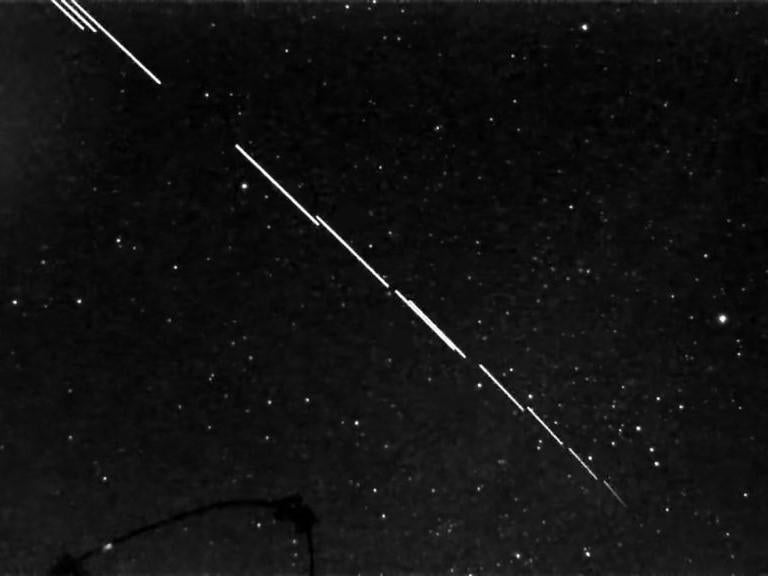Elon Musk says he will use ‘space lasers’ to beam 100Mbps internet from Starlink satellites
Internet speed would be three times quicker than average 5G download speeds in the UK

Elon Musk's plan to beam high-speed internet to all areas on Earth from the Starlink satellite constellation will make use of "space lasers", according to his company SpaceX.
During the latest launch of Starlink satellites on Thursday, senior SpaceX engineer Kate Tice revealed that the firm had successfully tested inter-satellite lasers to transfer data at speeds greater than 100 megabytes per second (Mbps).
This would allow the satellite network to beam similar internet speeds back down to Earth, theoretically offering users in remote locations download speeds that are three-times greater than average 5G download speeds in the UK.
There are currently around 700 Starlink satellites in low Earth orbit, with plans to launch at least 11,000 more to provide worldwide coverage.
"With performance that far surpasses that of traditional satellite internet, and a global network unbounded by ground infrastructure limitations, Starlink will deliver high-speed broadband internet to locations where access has been unreliable, expensive, or completely unavailable," states Starlink's mission statement.
SpaceX said that it is targeting service in the Northern US and Canada before the end of the year, before rapidly expanding to "near global coverage of the populated world by 2021".
Users on the ground will be able to tap into the network using a personal antenna device to pick up the signal.
SpaceX's journey through the Solar System
Show all 6Early tests of the technology have shown download speeds ranging from 11Mbps to 60Mbps, while upload speeds range from 5Mbps to 18Mbps. It is not clear whether SpaceX was using lasers to assist its network, though speeds are expected to increase as more satellites are added to the Starlink constellation.
In its original filing with the Federal Communications Commision, SpaceX said that its space-based network could reach speeds of up to 1Gbps, a speed 10 times faster than 100Mpbs.
"Our network, of course, is very much a work in progress," said Ms Tice. "And over time, we will continue to add features to unlock the full capability of that network."
SpaceX has faced criticism for its Starlink network, with some astronomers claiming that the satellites disrupt observations of the night's sky.
A recent report by the Satellite Constellations 1 (Satcon1) workshop warned that Starlink could fundamentally change ground-based optical and infrared astronomy and hinder scientific progress.
“We find that the worst-case constellation designs prove extremely impactful to the most severely affected science programs,” stated the report, which was published last week.
“With tens of thousands of low-Earth orbit satellites, we find that generally no combination of mitigations can completely avoid the impacts of satellite trails on the science programs of the coming generation of optical astronomy facilities.”
Subscribe to Independent Premium to bookmark this article
Want to bookmark your favourite articles and stories to read or reference later? Start your Independent Premium subscription today.

Join our commenting forum
Join thought-provoking conversations, follow other Independent readers and see their replies